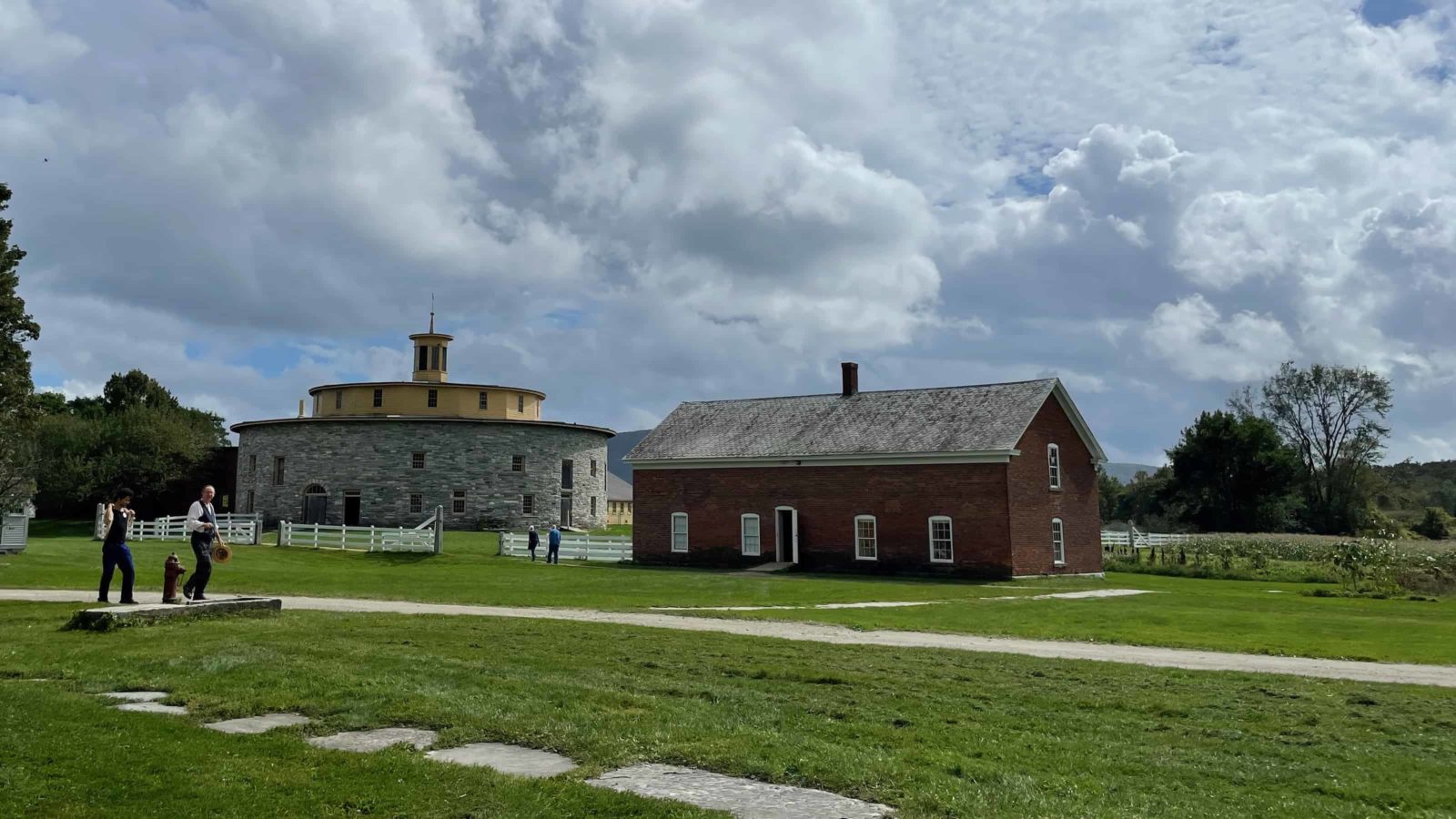Hold the note and feel it in your chest. Take a quick breath and pick up the sound again to keep it going, as closely as you can. The voices around you will give you the pitch, and we will all hold it together. Abigail Haynes-Lennox is directing us — a soprano in the extended company of Roomful of Teeth, and she’s up here on a mountain at the edge of fall, leading a damp and sweaty bunch of hikers in Shaker hymns.
Half of us are following her in a line of melody, and then we hang on to the last note, and the other half sing over us. She sings in a clear, carrying tone, and the song feels earnest, stripped down to essentials. Take care of your trees and they will grow soundly. Save some of your apples for the winter.
Our voices join in one note, and I can feel the hum of it. When I hit the pitch right, my voice blends in and I feel the strength of us. I’m still warm from the climb, and the air is moving, and the trees are dripping with the rain that hasn’t really come yet. The cinnamon fern around me is waist high, and the meadow shows some traces of the ten years, 150 years ago, when the Shakers came up here to worship.
I’ve been wondering why they came up here and how they felt about the woods. How does this place fit in with their philosophies? That question has been with me all day, as I’ve been walking through the village with a friend. We’ve been handing observations back and forth. The Shakers came up here onto the mountain, holding hands and singing. They would dance here, hear ecstatic visions, roll in the grass.

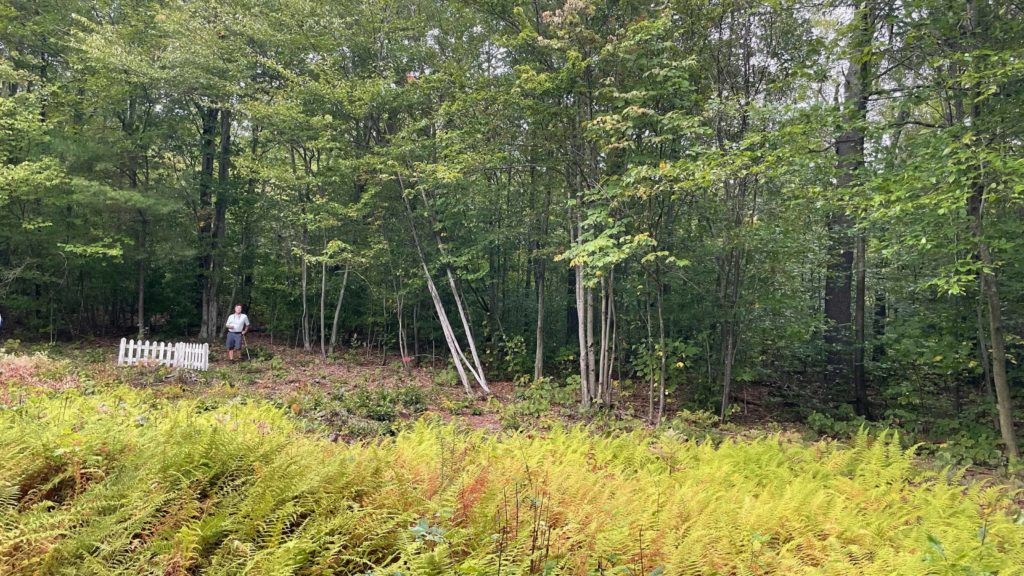
But this land would have been far more cleared then. They diverted the stream to power their wood shop and laundry. The song we were listening to as we came up the last stretch of the trail described this meadow as a temple where I will see my mother’s children crowned with a royal diadem.
It may be a vision, not an earthly mineral — celestial, Dante’s Paradiso — but it still surprised me. I was looking up into old hemlock trees, a few steps from the place where they used to worship, and listening to a song they would have sung as they walked, and they were not singing about the land or the spirit. They were singing in a language of jewels and kings.
But then we step out here into the open, and we’re singing about living trees. This time of year, would the Shakers have come up here to gather walnuts?
The Shakers cared for their animals well and argued for their well-being. They cared for their tools well, too, and their machines, and they adopted new technologies eagerly. They often painted over wood in bright colors — I’ve been told before that they rarely let the natural grain of the wood show. When they write about their ideals, they write about simplicity, responsibility, equality and warmth.
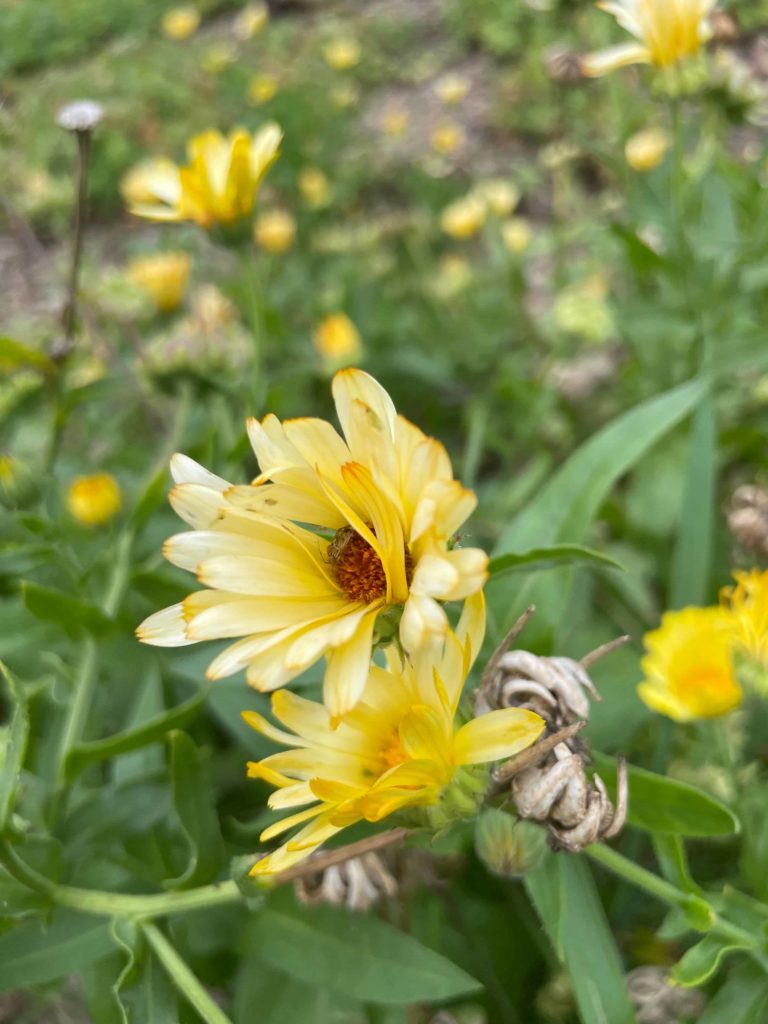

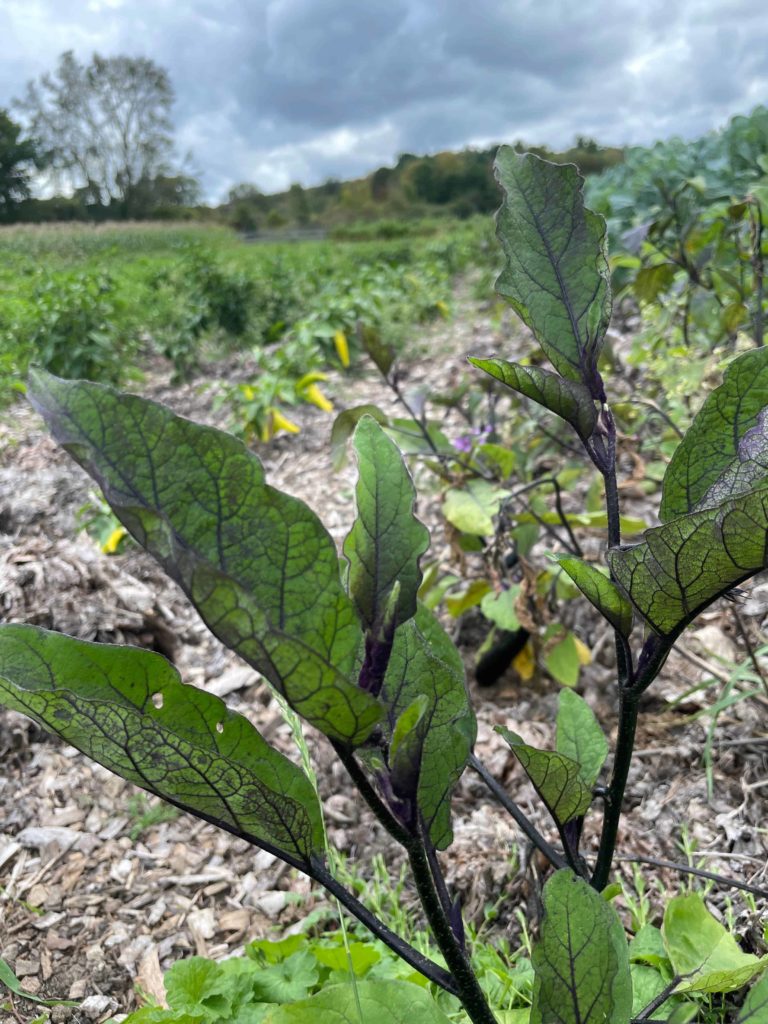
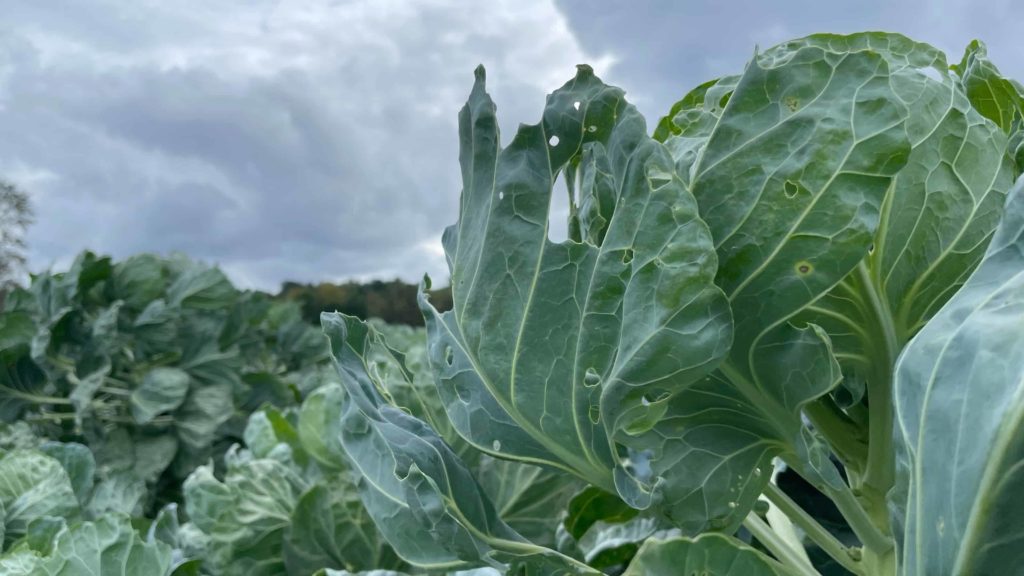
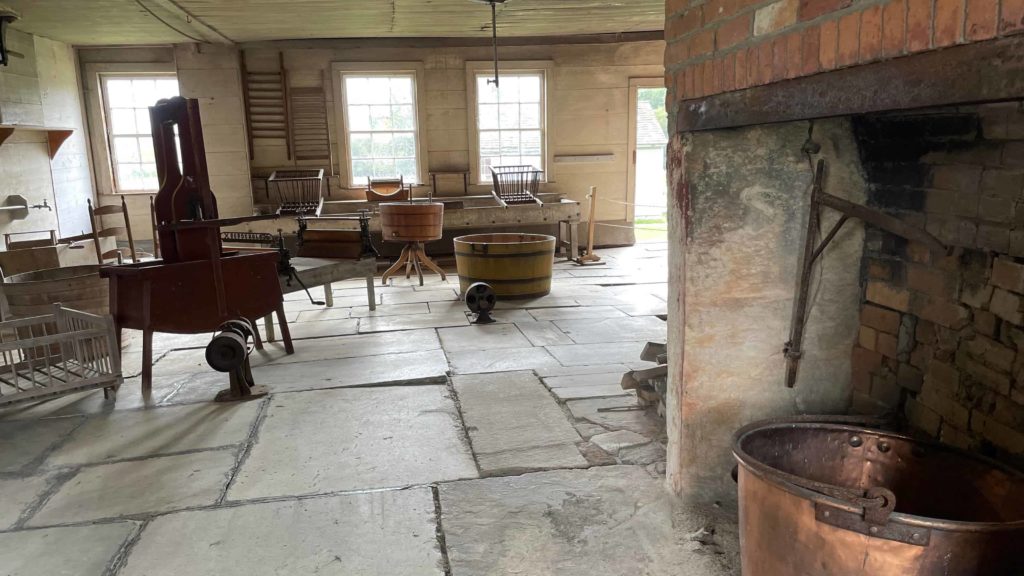
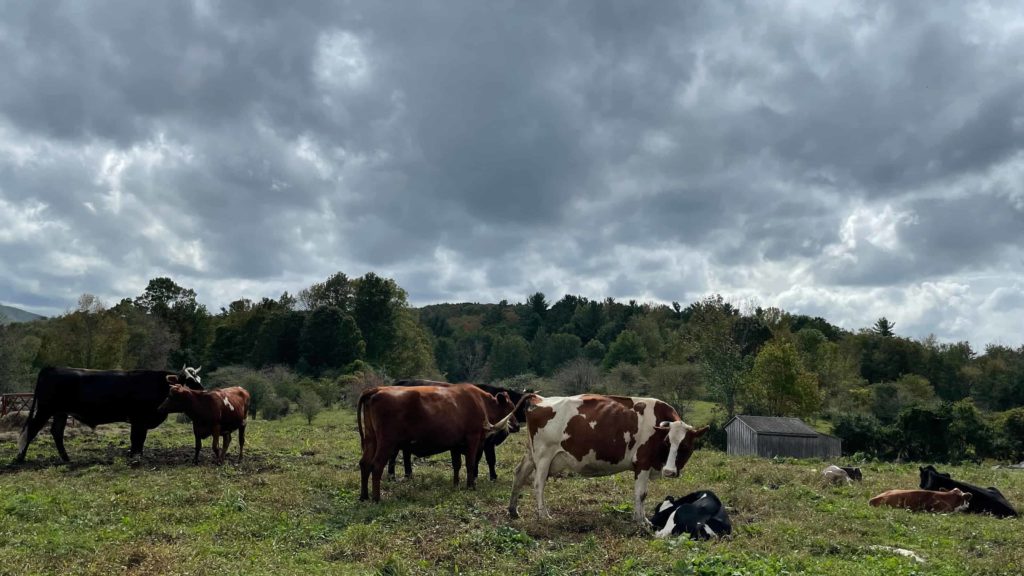
And at the same time, as we walked through the village that day, I kept coming on reminders of their efficiency and their mechanical skill. We saw the belts driving lathes in the woodshop and the long-bonneted car that was new and top of the line when the Shakers drove it in the 1920s.
We talked about their value for smooth, flat surfaces, not only as a look but as an ideal, and the way they designed the ice house for walk-in cold storage and their kitchen for running water more than a hundred years ago, and why even the children who grew up here dressed alike so that no one would stand out … I realized I was not surprised at the end of the day to hear them compared to utopian modernists.
Brooklyn artist Thomas Barger makes that comparison between the Shakers and architects after World War I, designing buildings meant to reflect social ideals. Modernism in art often aligns with machines, manufacture and and mass production. Does Barger see a throughline from this village to buildings made from concrete, steel and glass — sheer surfaces, rounded lines, spaces made to influence the way people thought and acted in them?
I think I can see his point. Before we walked up here, my friend and I sat on a bench in the meetinghouse, talking over his artwork. One red chair sits in the middle, a nine-foot-tall chair with rounded edges and a high peak. It is dimpled with holes like pie dough touched with a fork, and in the light from the window they seem to hold a reflection, but I think it’s an optical illusion.
It sits in the middle of a circle of Shaker chairs, all turned inward as though they or their invisible occupants are looking at the invisible man sitting in the center. The red chair sits in the center of the room, almost touching the ceiling and the round light inset above it. Around the chairs, rope forms a barrier, enclosing the group away from the room.
The red chair itself is eye-catching and uneven, and you might find humor in its bright color and rounded surface. It’s made of paper and wood pulp and glue, and my friend thinks of Mexican papier maché. Its brightness stands out clearly here in a long open room with white walls and clear glass windows, wood floor and blue trim.
We read the description and talked it over slowly, sitting side by side on a wooden bench. As an artist from Brooklyn, Barger talks about skyscrapers and urban design, and about his experiences growing up as a gay man in a more rural and conservative part of the midwest. He calls this work tall pulpit chair, and he talks about thrones and judgements, and I can see that here — the position of the chairs, the tall pointed shape of the red one, the contrast in its paint, and the chairs surrounding it as though the whole group is looking at this one.
Then he talks about love and passion, about respecting a community and at the same time knowing they would not accept him, having to leave to live with full strength and confidence. And I want to see that. I wonder if he has created other work in this series, or if he may move this chair to different places in the village, and how would the conversation change if it sat at the long table in the kitchen … or by the trail head near the brook?

Hancock Shaker Village in Pittsfield recalls 18th-century life, in a living history museum.
Brad Wells talked about the worship here and the ritual around it, the walk and the singing and the feeling of joy the Shakers describe, as a kind of shared joyful improvisation. The movement and the feeling and the ideas come together for them, and they feel a strength in community, and a strong emotional response, and maybe a sense of release.
When I think of a round room made of wood and stone and wide windows, or a walk up through the woods, singing, to pray in a meadow, I don’t think of thrones and hierarchies, or the dominion of man over nature.
I think of the circle of old hemlock trees at the edge of the meadow. Holding hands on a rainy day. Rolling down a grassy hill, dizzy and laughing. Wading into a pond to watch crayfish and the tadpoles of green frogs. Walking through the old pathways around the Shaker village in Canterbury with an old friend as she tells me about her memories here as a child.
Equality or equity does not mean sameness to me, because our strengths and characters and gifts and natures are not all the same — equity means that we have the chance to grow naturally. Each tree has water and earth and room, as they need them.
Abigail leads us in this song, and we’re standing on a hilltop where my ancestors, or people very much like them, cut down almost all the trees not long ago. In the lifetime of a tree, not long at all. Some have come back now, young white pine and maple … and I’m thinking, if I’m going to tend my orchard this year for the future, I want to learn permaculture.

